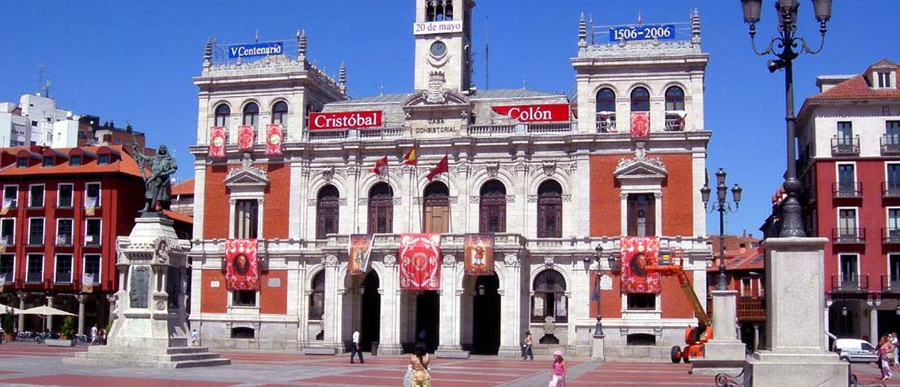
Valladolid is the architecturally diverse and sophisticated capital of the Castile-Leon region in Spain. It has a large student population, meaning the city really comes alive at night, and by day there are plenty of monuments and museums to enthral as you wander around the city streets. From hosting the marriage of King Fernando and Queen Isabel in 1479, the residence of Miguel Cervantes, author of Don Quixote, French invasion in the early 19th Century, to the death place of explorer Christopher Columbus, Valladolid has played a key role in the history of Spain.
National Sculpture Museum
The Museo Nacional de Escultura was founded as the Principal Museum of Fine Arts in 1842. It was relocated to the breathtakingly beautiful building of the former San Gregorio College in the 1930s, which is one of the best examples of the Isabelline Gothic style of architecture from the late 15th – early 16th century period of the Catholic monarchy in Spain.
If you can tear your eyes away from the gorgeous surroundings, the artwork housed here is pretty special, ranging from the Middle Ages, the Baroque, to the early 20th Century, and featuring Spain’s premier collection of polychrome wood sculpture. Art buffs will be delighted to see works by the likes of Alonso Berruguete, Gregorio Fernández, Filipe Bigarny, and Juan de Juni. Although there is a focus on sculpture, the museum also houses a significant collection of paintings by some of the Spanish masters.
Cathedral of Valladolid
Like so many good things, the construction of the Cathedral of Valladolid took time. In 1580 Juan de Herrera (the architect of El Escorial) was asked to build the cathedral, but after the death of King Phillip II in 1598, work stopped, to be taken up by Alberto Churriguera 18 years later. Churriguera is responsible for the flamboyant facade, while the interior of the building reflects the more sombre designs of de Herrera. The building remains unfinished to this day, although plans exist which show how large the original design was to be, before the funds ran out.
The grand altar piece designed by Juan de Juni is worth a visit; he uses a classical Italian style of Corinthian columns and entablatures, with an emphasis on beautiful sculpture-work, creating a piece of classical art in an architectural framework. Another sight to explore is the ruined remains of the 13th Century Collegiate Church, on the site of which the cathedral was built, to the northeast perimeter of the cathedral.
Campo Grande
Situated in the heart of the Valladolid is the triangular shaped Campo Grande Park. It is the city’s main park and has existed as a landscaped urban area from the late 18th Century. Today one of the main attractions is the number of birds; situated around the park are a pheasant sanctuary, an aviary, and a dovecot, with connections to the Pigeon Breeding Club of Castile. Possibly the most famous inhabitants of the park are the numerous peacocks that can be seen strolling around the grassy areas, displaying their glorious colourful feathers.
On a hot summer’s day, Campo Grande is the perfect place to relax away from the bustle of city. There’s a pond that you can take boat trips around, and plenty of paths to wander under the shade of the nearly 100 species of trees that give this park a status as a botanical garden.
Going Out
Spanish nightlife typically kicks off late and continues till even later, and Valladolid is no exception to this rule. Think dinner at 10, followed by a couple of bars, before hitting the clubs well into the small hours of the morning. As your typical university town, Valladolid has a thriving bar and club scene and you can find drinking and dancing all over the city.
Calle del Paraiso is a street lined with bustling bars and pubs. It’s conveniently located close to the Cathedral in the centre of the city, and is particularly popular with the student crowd. Nearby is the Plaza del San Miguel, where you’ll find overflowing bars and clubs in abundance. The general dress code is fairly casual, although some of the clubs will have bouncers on the door that won’t let you in if you’re wearing trainers or other overly casual items.
Great travel articles as well as deals, all sent directly to your inbox. Sign up today!
